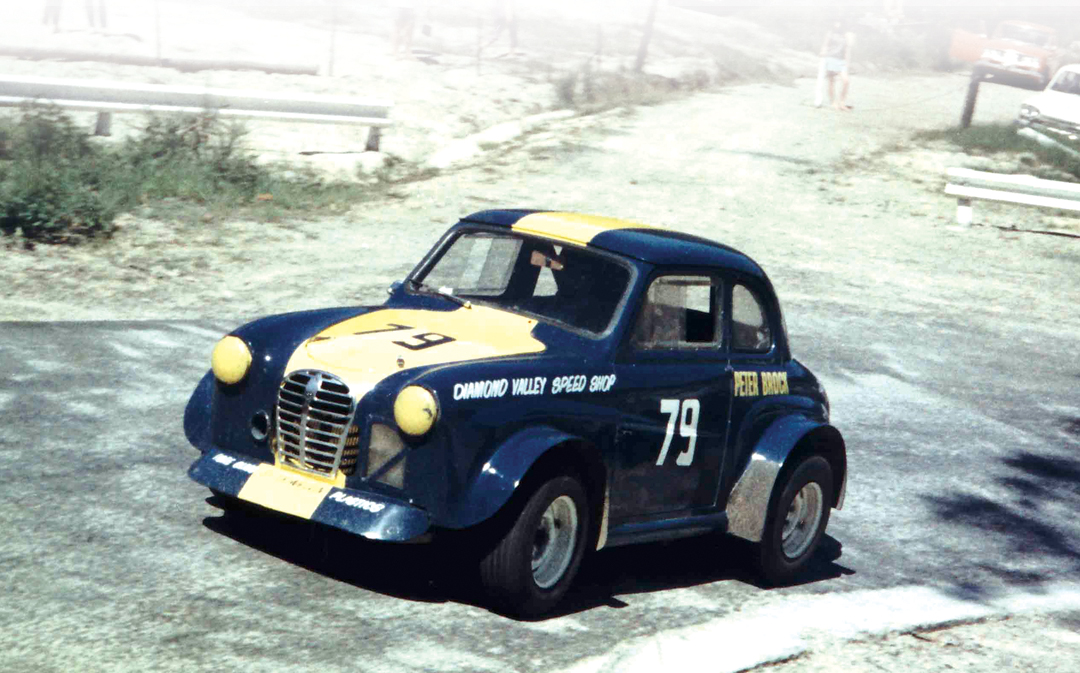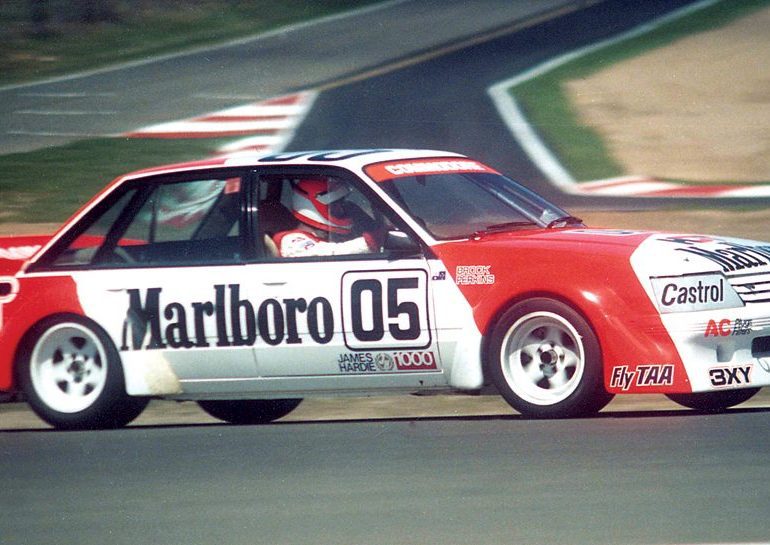In the world of Australian motor sport, there is perhaps no more recognizable household name than that of legend Peter Brock. Commonly referred to as the “King of the Mountain,” Brock made his name racing touring cars, where he forged his legendary reputation on the back of nine wins in the famed Bathurst 1000 and three Australian Touring Car Championships. Tragically, Brock was killed in an accident while racing in the Australian Targa West historic rally, in early September. However, just a week before, our European Editor Ed McDonough had the good fortune to interview Brock at the Goodwood Revival, which would sadly prove to be one of his last public appearances.
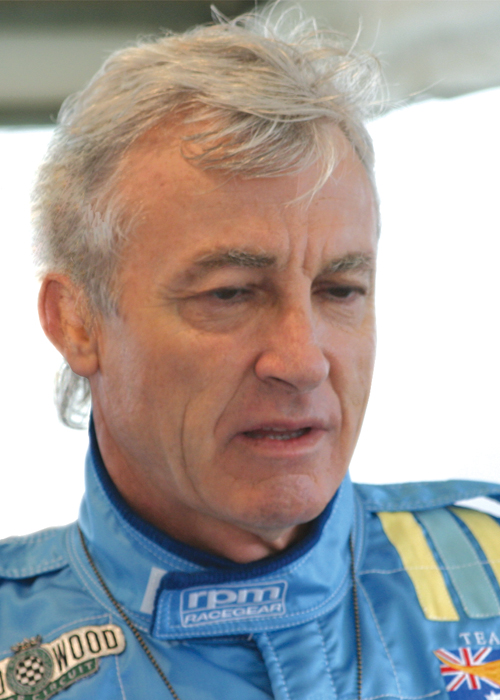
Peter, I had the chance to see just how much you were “revered” at home, recently when we saw you at Phillip Island. What has brought you back to Goodwood?
Brock: I came over to England and Goodwood this year just to show the English a car they had never seen before. I really enjoyed my stay last year and have been looking forward to getting back. There are just so many important and historical people here.
Are you somewhat bemused by the high regard in which you are held?
Brock: Nahhh!
Okay, so you have gotten used to it?
Brock: I know just what a lucky guy I am to have had such a good time. I always worked hard at what I did but I don’t really think about it. I just like to keep going and make the best of the chances I get. It’s a great treat to be back at Goodwood, and I am surprised at the number of people who know who I am, but the Brits are the most knowledgeable people in motor racing anyway.
You have come over with the Munday clan from Melbourne and their Holden, which I assume you consider is an important car because of your long association with Holden?
Brock: Well, that’s partly right. I did race and work with Holdens for many years, but this is something of a special car. Round about post–World War II, the Australian government figured we really should have a manufacturing industry in Australia. There had been a little bit of coach building, but this was to be a serious venture, so tenders were put in and the bid was won by General Motors. They began to design a car in 1946 and it came out in 1948, and the Holden I brought to Goodwood is called a 48 Series. It was quite a light car, about 2,100-lbs, with an engine capacity of 138-odd cubic inches, a push-rod straight-six—a bit like a shrunken Chevy Six, or I suppose for English fans, an E-Series Vauxhall . . . similar, but nothing is quite the same.
This car was the mainstay of Australian motor sport for the late ’50s, the ’60s and even into the ’70s. It was nothing to see a field of 30 or 40 cars composed only of old Series 48 Holdens. And yet, in England, it has never been seen. It doesn’t look particularly quick but it could go well at Goodwood. We’ll have to wait and see. We could’ve raced a more modern body shape. The 1958 or 1959 car had a more contemporary body shape, a little bit like your Hillmans and Zephyrs, what have you. But this was lighter and it was nicer and I think it will come as something of a surprise. It’s actually not a bad racecar, which is why it stayed around in Australia for so many years.
So this is a special car in Australian industrial terms, but you were very close to Holdens for a long time. In fact, you and Holden and Bathurst were almost synonymous for years.
Brock: I always look back on my years racing Holdens with great affection, especially at Bathurst. The Hardie Ferodo race always brought the best out in most people—I think it might have brought the worst out too!—but it always was a tremendous challenge for a driver and for a team. You have seen the circuit now, Ed, and have driven around it at slightly more than the legal speed limit I believe, and you know just how fantastic it is. In the early years, I had Harry Firth helping me and, in the later years, Graeme Brown. I even used to drive my car to the circuit, and one year it was the car we won in. I think you met Ian Tate at Phillip Island, as he was the organizer. Well, he used to be the mechanic for Colin Bond’s XU1, Harry Firth’s number-one mechanic. Well, Ian used to go out “testing” with me regularly and we would do hundreds of miles getting the car right, and drive as fast as possible on deserted roads. Ian’s done lots of laps at Bathurst in the car with me. [Shortly after Brock’s death, Ian Tate told VRJ about the amount of time he had sat in the car with Brock. Tate was distraught over Brock’s death and had difficulty imagining the Australian racing scene without him. He had tried hard to persuade Brock to ease up on his ambitious program, which included the West Targa rally that Bock lost his life in.]
We will come back to Bathurst in a bit, but I want to ask you what you get out of coming to Goodwood, and what it is you feel is interesting for you here?[pullquote]“Unfortunately, we emasculate racetracks nowadays; we make them safer and have less consequences.”[/pullquote]
Brock: You know, I came over to show this car around and to let everyone know how good I am at cricket, which you saw me prove just the other day. I think I could make a living at this! I didn’t do myself any favors by not touching a cricket ball from last year until this, so I just went out there and started slashing at every ball that came by. I hit a few but eventually I got caught out. I was thinking, “Oh Peter, what were you doing there?” I should have just backed off and got my eye in, like you do in racing. This was just the moment to be playing cricket with all the controversy around, which will be historic for cricket. And I had a chance to watch Lord March’s son, young Charles, the bowler. He got a magnificent hat trick as a bowler, and he was the hero of the game. I realized he was Charles’s son but I didn’t know how committed he was to cricket. He will probably go on to Eton and be in the first eleven.
There were a few fairly experienced racing drivers who got bowled and didn’t look too happy.
Brock: I think they were shocked. They came for a pleasant afternoon and some tea and got done over by young Charles. He was that good.
I remember here last year that he was bowling to you in the practice cage and you were hitting some pretty hard balls at him.
Brock: Well, I didn’t know who he was then, so I’m glad I never hit him, but he’s taken everyone by surprise.
Is that the kind of thing that’s the draw here at Goodwood?
Brock: That’s one of the reasons I love to come to Goodwood. There is so much to take in. As a driver, you really don’t do yourself any favors because you have to spend your time driving, getting changed, going to the functions and things like that, but I just like to walk around. You really want to just spend time walking around in the pits and the paddock. There is a lot of magnificent machinery here that I absolutely revered as a kid. It would be easy for people to say, “He’s coming from Australia and he doesn’t know about this stuff.” But you would be surprised, because we had international drivers in their machinery at places and races like Albert Park, people like Stirling Moss and Jean Behra. There was quite a list of drivers who came to Australia and I knew them and I knew the cars, and to come here and to see them is great for me. At the cricket match on Thursday, Stirling Moss and all the great drivers were sitting out there at the end of the day when that Spitfire flew over and were just as excited about it as I was.
I remember on my 14th birthday I was given a subscription to Road and Track. I remember my auntie giving it to me and it was magnificent because I remember all about those Chaparrals and the Phil Hill story. Of course, at Goodwood the cars and Phil Hill are here and I am no less enthusiastic about them now than I was then. I just soaked up all that material like a sponge. I just knew every little nuance of the cars, so to stand here in the paddock and see them is pretty unbelievable. I go and test myself to see what I remember. It sort of kick-starts your memory… “I remember this car from…” whenever that was. I managed to get into the Chaparral just to sit in it because it was so important to me 40 years ago when I was still young. I got shouted at for getting in it until someone said I could, though!
I know you are focused on driving the little Holden, but you are also driving something bigger and faster.
Brock: Yes, I’m sharing David Cooke’s Chevrolet Corvette Sting Ray…that’s sort of in the same family as Holden. That’s in the two-driver race which always gets a bit hairy here and is pretty exciting with all that expensive machinery on a relatively short circuit.
You have been out in practice in that car already?
Brock: Yes, we managed to be 7th fastest in the qualifying, which was pretty good against four Jaguars that were all very fast and a Ferrari and a Cobra. But I think some of the Jaguars got into trouble and might not be able to race.
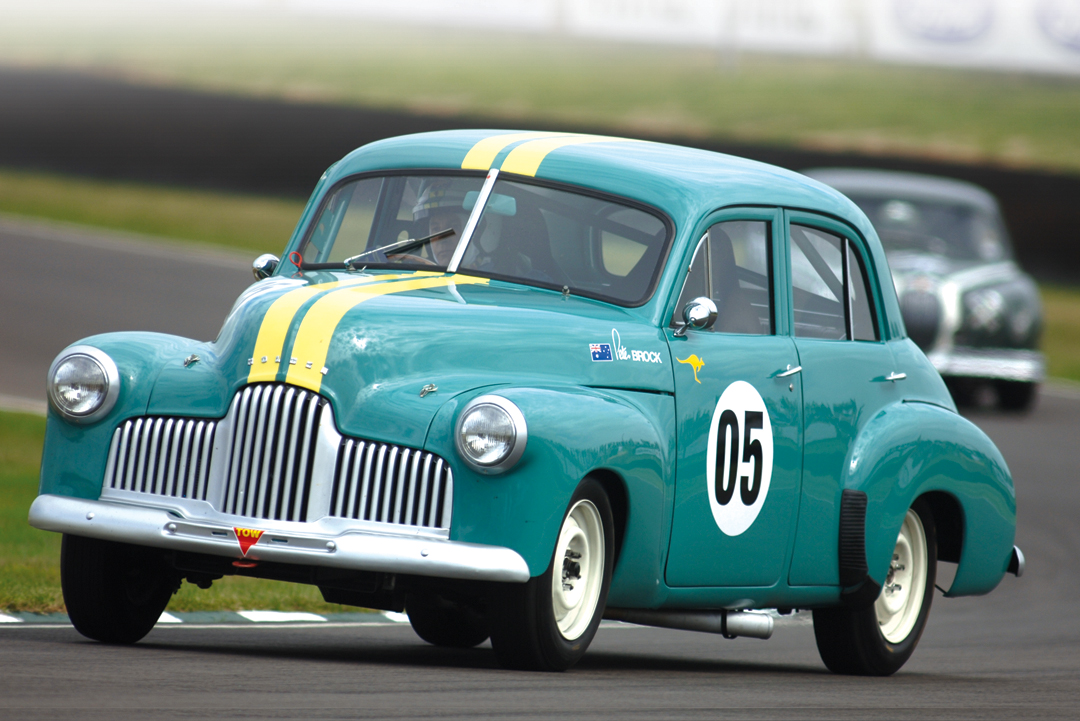
Do you tend to consider this a historic race, which is mainly for enjoyment, or do you get serious right away and have to go for it?
Brock: Yep!
Okay, which is it?
Brock: Well, both really. I have to look after the car because it’s not mine, but we are here to race. I guess I apply the same strategy as I do anywhere else, which is to stay with the front-runners and keep out of trouble, as long as the car can do it. The issue here is that there is a real mix of experienced and inexperienced drivers and you have to be aware that you don’t know what some people will be doing. But the standard of driving is pretty good and we will try to be competitive, but I don’t do any more than I can or the car can…mostly! I can take the time—being in two practice sessions and two races—to watch some of the other drivers take certain corners because I believe you can always learn. There are guys here who know their way around in fast cars and I tend to watch them in certain places. There is Derek Bell, John Fitzpatrick, Patrick Tambay, John Whitmore, Richard Attwood, David Piper…guys with vast experience, and of course, there’s Stirling Moss himself, and a lot of really good historic drivers.
Do you get caught up with the glamorous cars?
Brock: The funny thing is that our Holden is as interesting as a lot of the other cars here. If people understood the cultural significance of this Holden…it is massive. The Chevrolet is geared toward American hearts, but the 48 Series, the Holden FX was marketed as Australia’s own, and that was historically very important. People bought these cars in droves and, at one stage, 55% of all cars sold in Australia were these old Holden sedans. That’s a staggering figure when you look at the competition they were up against. They were tough and they were strong cars. Some people ran them in the Redex Trials, though they were a bit “iffy” in that kind of thing. They probably didn’t have the suspension travel of the Peugeots and Volkswagens for Round Australia, but they were rugged cars and they went well. Eventually, we won the Round Australia Trial in a Holden, but not this model.
Holdens made their name at places like Bathurst in Australia and that helped to capture the imagination because Bathurst and Mt. Panorama is such an incredible place. In fact, there is a 12-Hour race planned for next Easter, and quite probably I’ll take part in it, and the reason is that I do have this great love affair with that track. There’s a knack in getting around there without hurting the machinery and going fast, and you know, as you sort of go around the track you ask yourself, “Did I manage to get it just right this time? Did I get it just nice?” It’s a challenge for every race driver. Unfortunately, we emasculate racetracks nowadays; we make them safer and have less consequences. Well, no matter what you do to Bathurst, you can take away some of the consequences but it is still one hell of a track!
As we seem to be back on Bathurst, let me ask why it is that that race became so popular, because it wasn’t the only one going on at the time.
Brock: Oh no, there were other races but two things seemed to make a difference. First, it was the challenge of the circuit itself which has to be the toughest one anywhere and is spectacular on every part of it. Second, the television coverage gave it an international reputation, and a reputation as something incredibly tough, and it sort of came to stand for Australian racing. The manufacturers realized that, if a car did well there, it would get a lot of recognition. When I won in 1976 in the Torana L34, we were running on a budget that was really small. We just didn’t have much money. The Toranas were the car to beat and that made Holden happy. It might look to an outsider like it was domination by a single marque, but the racing was so tough that whatever car won had to earn a strong reputation. In the 1980s, the Commodore was the car to beat under the existing regulations, and even when those regulations changed to conform to international rules, it was still the dominant car. It was interesting, about the Commodore, that sometimes it wasn’t as good on some other slower or less spectacular circuits, but it always did well at Bathurst. The reason for that was that Bathurst was always the target. That was what the manufacturer wanted and what we wanted in the team. And not just our team; it became the thing everyone strived for, and I guess that makes it more like Le Mans than any other race.
Didn’t someone say that you had made Bathurst your own private Disneyland?
Brock: Yeah, that was Bill Tuckey. I think I even replied when he wrote that and I said that I wished it was but that Bathurst was more than that, that it was bigger and it was a private Disneyland for everyone who was lucky enough to race there, especially those that got to do it every year.
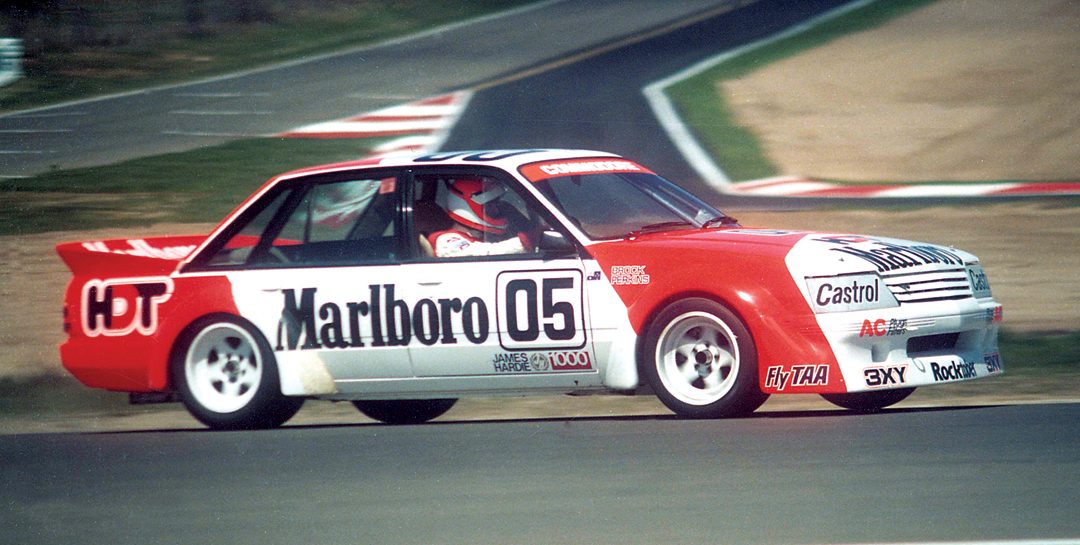
Australian motoring journalists and fans coined a few phrases for you didn’t they, mostly pretty complimentary?
Brock: Mostly! Peter Perfect was one, which wasn’t true but it sounded nice. I think that was because of my habit of trying to get in the perfect lap, to continue to improve every time I came around. I don’t think I ever achieved it at Bathurst because there was always something more you could do.
Stirling Moss described his technique at Monaco in 1961 where he would start at a certain point on the circuit and see if he could get the braking, the cornering, the acceleration, perfect for an entire lap. If something happened, he would pick a spot and start again, and that was reflected in that race by all his times being very, very quick and all very close to each other.
Brock: Well, I’m not Moss but that is sort of the basis of doing it. In the early years, I would just try harder which didn’t always work, and sometimes it would be slower. But eventually I got smoother and could concentrate for a lap, but that was always hard at Bathurst.
You developed something known as the “Brock Crush,” didn’t you?
Brock: I’m surprised you know that! I don’t think I developed it but it just was something that happened. I was pretty good at starting races and I began to work on improving that. I had a run of races where I started well and then either won or did well, and the Brock Crush was the term for hitting the opposition hard at the start and making them think I was going to win. A lot of that was always down to the good preparation of the cars I had, not just me. I hope it works the next time I’m at Bathurst!
Several days later, Brock returned to his native Australia to race a Cobra Daytona coupe replica in a small historic rally in Western Australia. Brock lost control of the car and struck a tree on the driver’s side of the car, killing himself and badly injuring his co-driver. For those interested in honoring the memory of Peter Brock, we encourage you to make a donation to the Peter Brock Foundation at http://peterbrockfoundation.com.au
